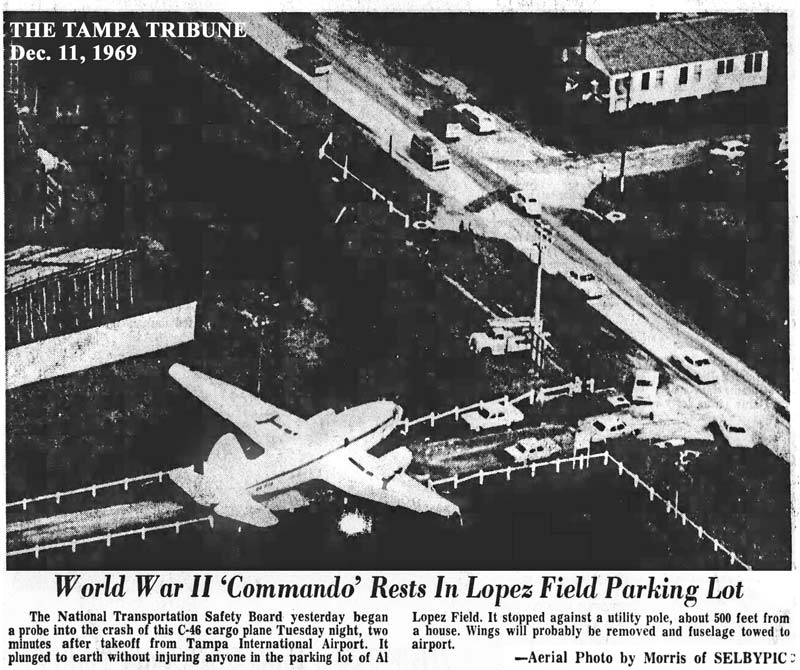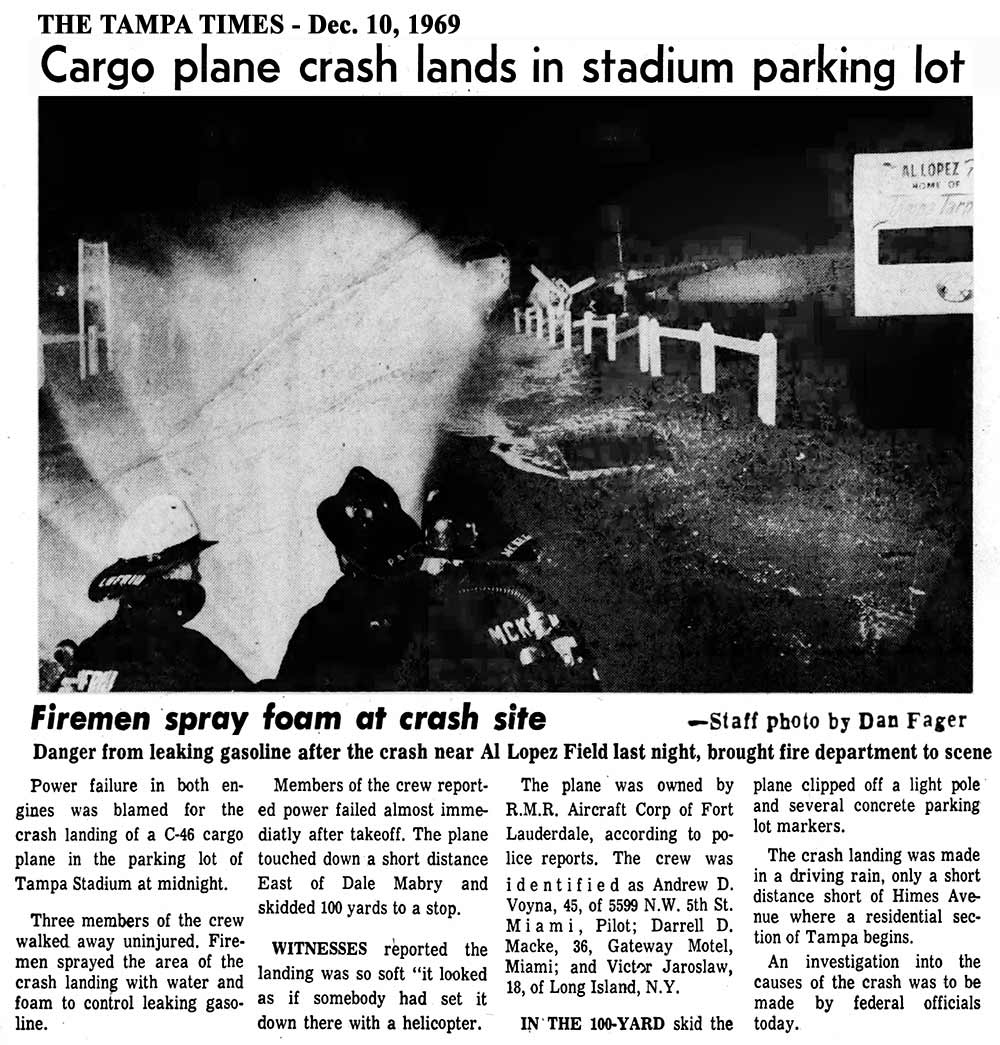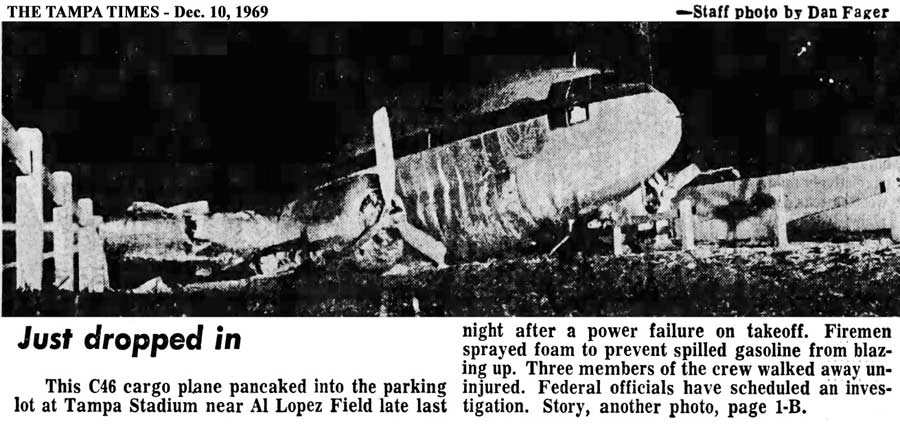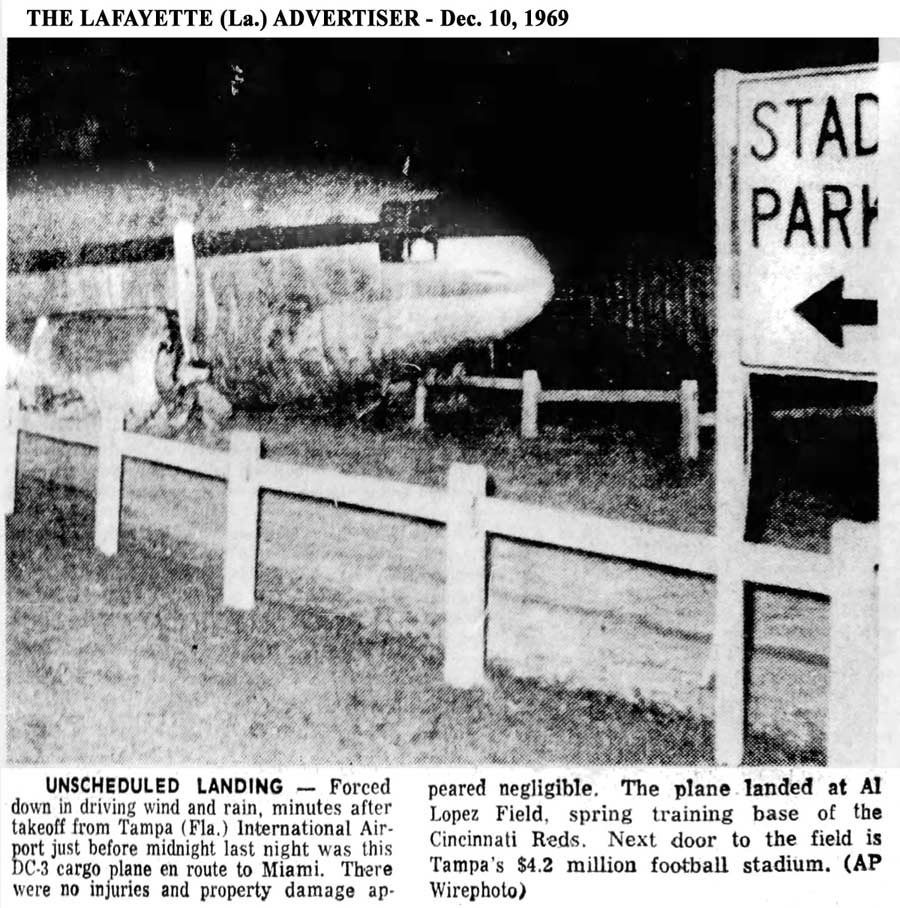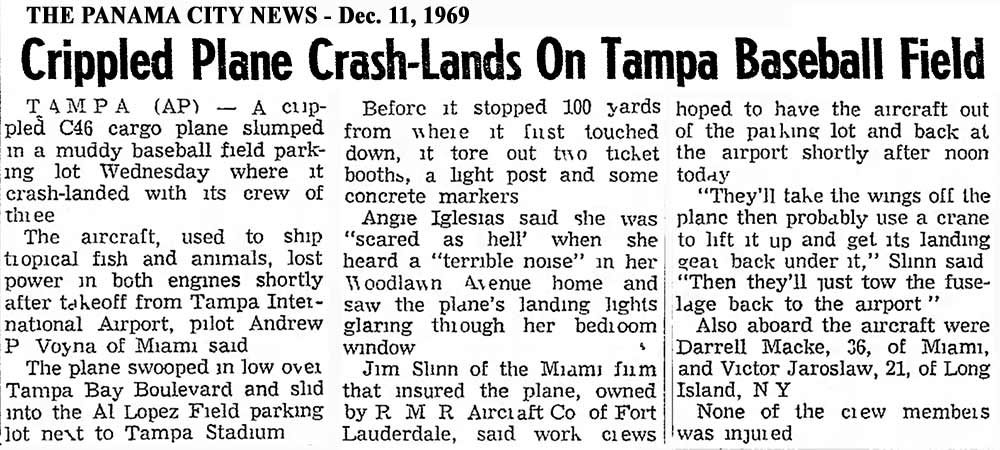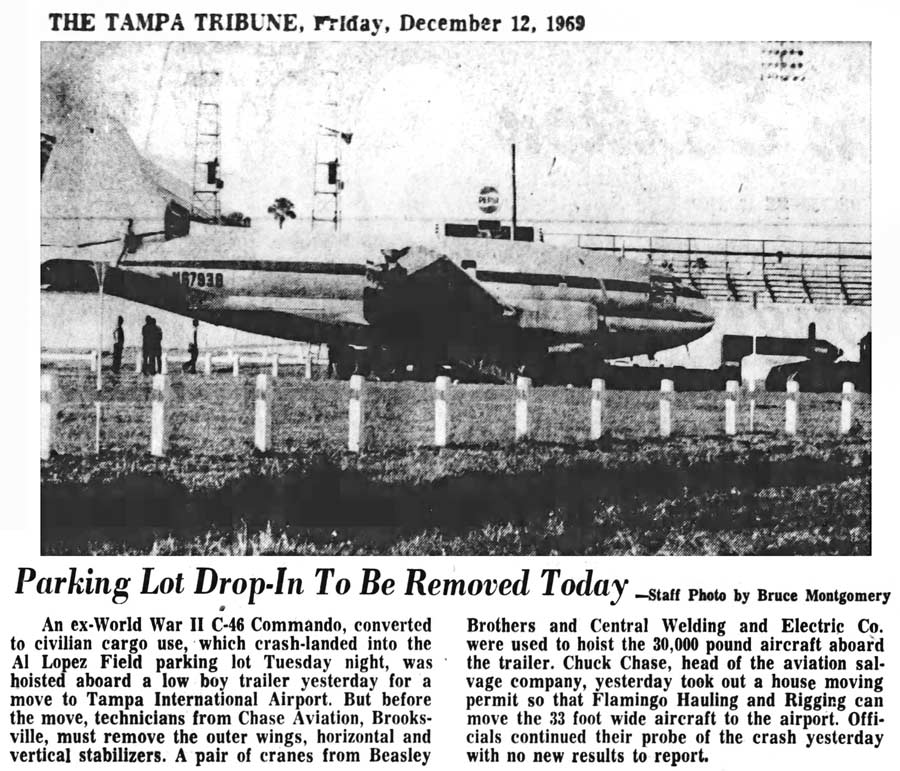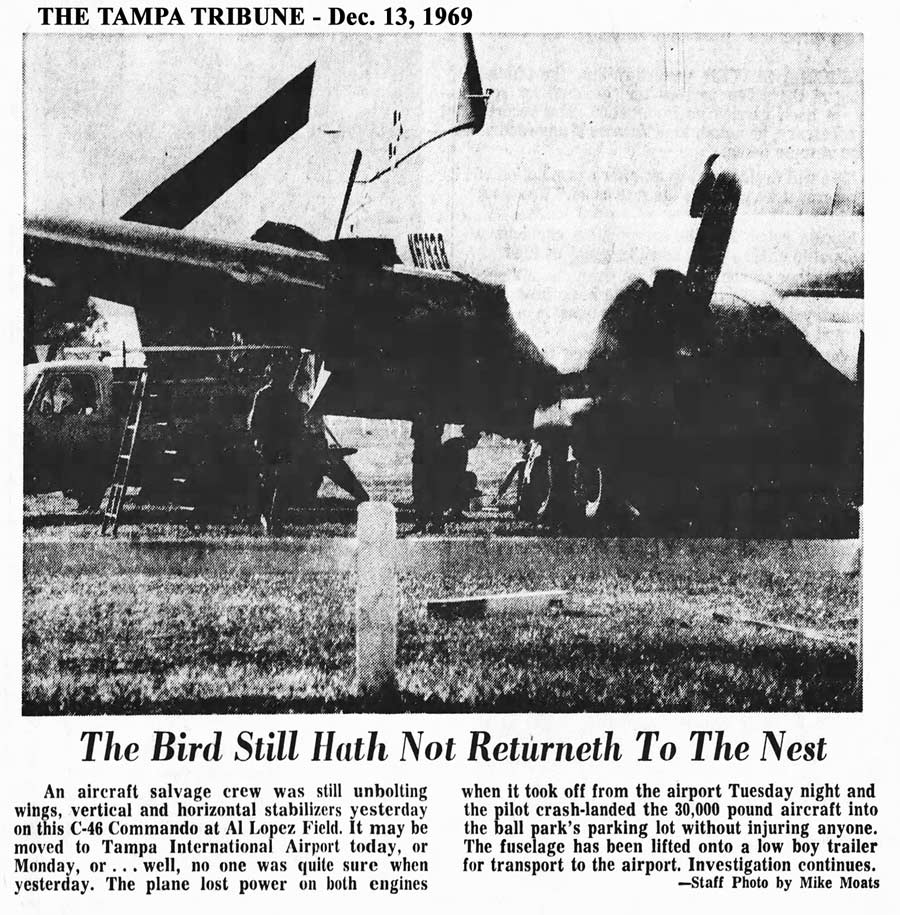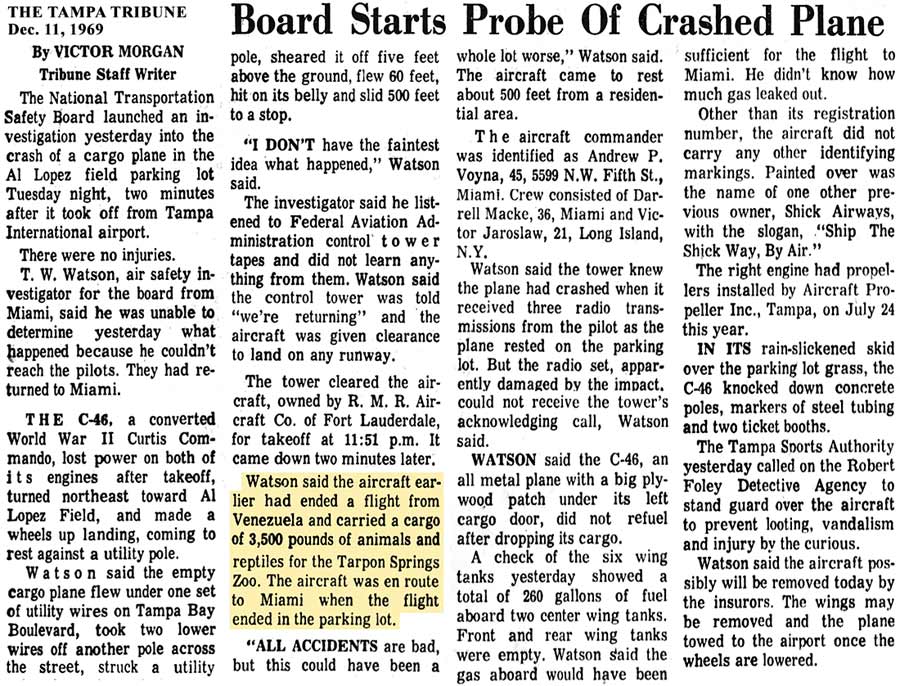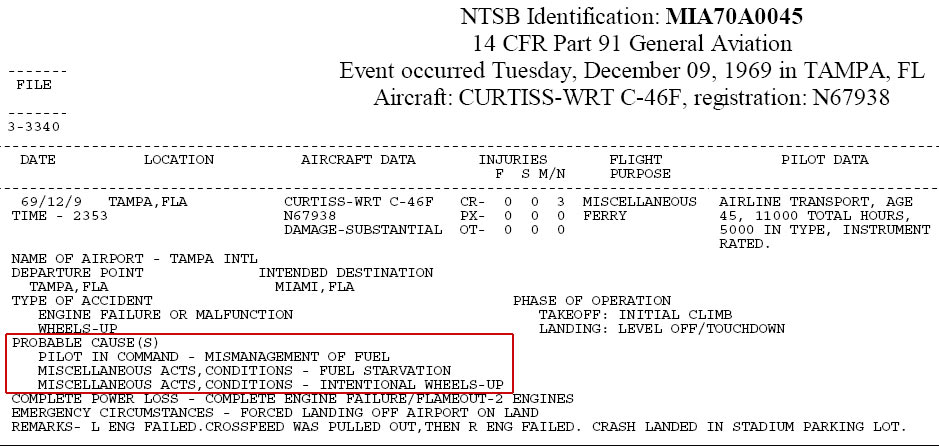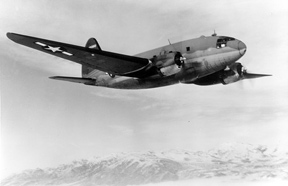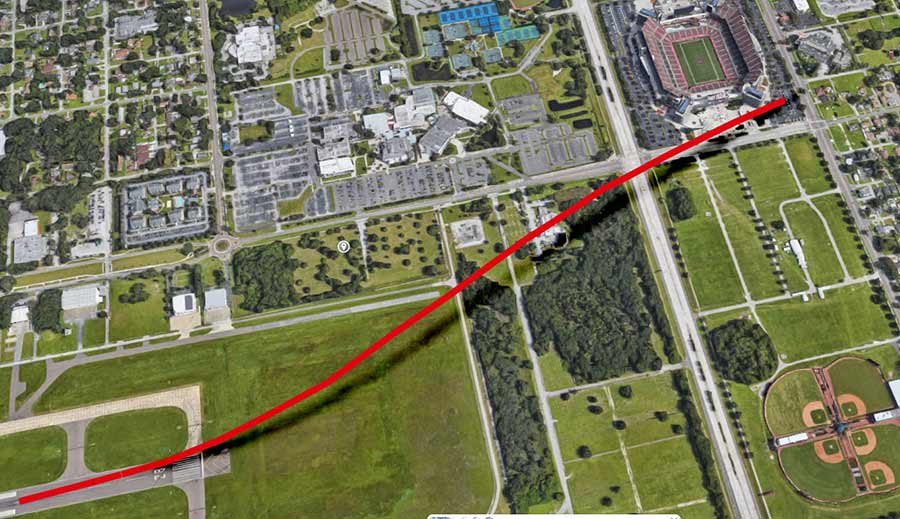The National Transportation Safety Board began a probe yesterday into the crash of this C-46 cargo plane Tuesday night, two minutes after takeoff...Wings will be removed and fuselage towed to the airport. NTSB investigator T. W. Watson was unable to determine the cause of the crash yesterday because he couldn't reach the pilots; they had returned to Miami.
The C-46, a converted WWII Curtis Commando, lost power to both of its engines after takeoff, turned northeast toward Al Lopez field, and made a wheels-up landing. Watson said the empty cargo plane flew under one set of utility wires on Tampa Bay Blvd., took two lower wires off another pole across the street, struck a utility pole, sheared it off 5 feet above the ground, flew 60 feet, hit on its belly and slid 500 feet to a stop. Control tower tapes did not reveal what happened, the pilot radioed "We're returning" and the plane was given clearance to land on any runway.
The plane was owned by R.M.R Aircraft of Ft.
Lauderdale. The plane had just returned from
Venezuela and had unloaded a cargo of 3,500 pounds
of animals and reptiles for a Tarpon Springs zoo,
and had just taken off bound for Miami.
The aircraft commander was Andrew P. Voyna, 45, of
Miami. The crew members were Darrell Macke, 36, of
Miami and Victor Jaroslaw, 21, of Long Island, NY.
The control tower knew the plane had crash landed
when it received three radio transmissions from the
pilot as the plane rested in the parking lot. The
plane's radio was damaged and could not receive
acknowledgement from the control tower. The C-46, an
all metal plane with a big plywood patch under its
left cargo door, did not refuel after unloading its
cargo in Tampa. The six fuel tanks in the wings
showed a total of 260 gallons of fuel in the two
center wing tanks; the front and rear tanks were
empty. The gas on board was sufficient for the plane
to fly to Miami.
Watson could not determine how much
fuel had leaked out.
Other than its registration numbers, the plane had
no markings. Painted over was the name of one other
previous owner, Shick Airways, and the slogan, "Ship
The Shick Way, By Air." In addition to the concrete
poles and steel tubing, two ticket booths in the
parking lot were knocked over. The Tampa Sports
Authority called on Foley Detective Agency to stand
guard over the plane. The plane would probably be
romoved by the insurors. Once the wheels were
lowered, they planned to remove the wings and tow
the fuselage to the airport.
